Pygmy Marmoset
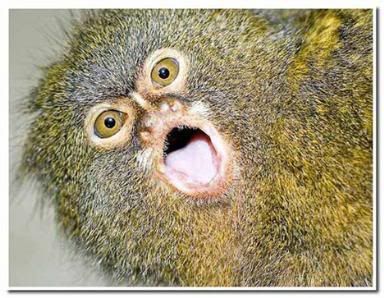
The Pygmy Marmoset is a monkey native to the rainforest canopies of western Brazil, southeastern Colombia, eastern Ecuador, and eastern Peru. It's one of the smallest primates, with its body length ranging from 5.5 to 6.5 inches (14 to16 centimeters) excluding its 6 to 8 inch tail. Males weigh around 5 ounces (140 grams), and females 4.2 ounces (120 grams).
The Pygmy Marmoset bears a tawny coat and a ringed tail that can be as long as its body. Their claws are specially adapted for climbing trees. Although omnivorous, much of their diet comes from tapping trees for sap. Up to two-thirds of their time is spent gouging tree bark to reach the gummy sap. The Pygmy Marmoset has specialized incisors for gouging holes in bark.
Proboscis Monkey
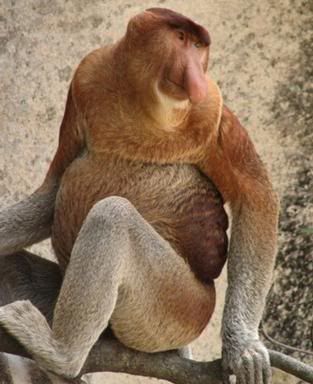 Pink Fairy Armadillo
Pink Fairy Armadillo
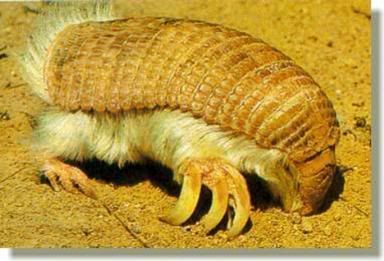
The Pink Fairy Armadillo is the smallest of its species. It's about 3.5 to 4.5 inches (90 to115 Milimeters) long excluding the tail, and pale rose or pink in color. It's found in central Argentina inhabiting dry grasslands and sandy plains with thorn bushes and cacti. It has the ability to bury itself completely in a matter of seconds if alarmed.
The Pink Fairy Armadillo burrows small holes near ant colonies in dry dirt where it feeds upon them.
Narwhal
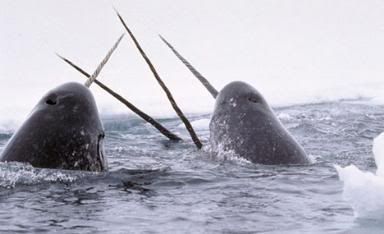 Komondor Dog
Komondor Dog
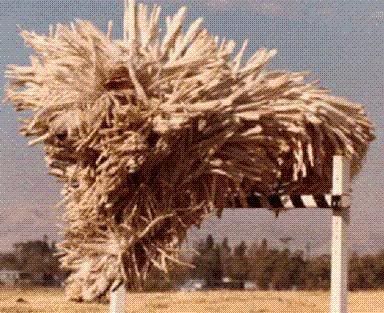
The Komondor is a livestock guardian dog breed originally from Hungary

Females are 27 inches (69 centimeters) at the shoulders. Male Komondorok are a minimum of 28 inches at the shoulders, but many are over 30 inches tall. People unfamiliar with the breed are often surprised by how quick and agile they are.
Its long, thick, strikingly corded white coat resembles dreadlocks or a mop. The puppy coat is soft, fluffy and wavy, curling as the puppy matures. A fully mature coat is formed naturally from the soft undercoat and the coarser outer coat combining to form tassels, or cords. Maintenance is required in separating the cords so the dog doesn't become a large matted muddle. The length of the cords increases with time as the coat grows.
Hagfish
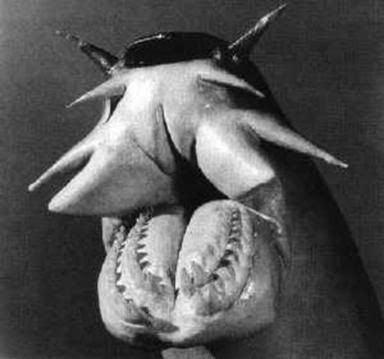 Frill-Necked Lizard
Frill-Necked Lizard
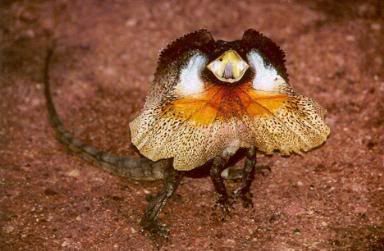 Emperor Tamarin
Emperor Tamarin
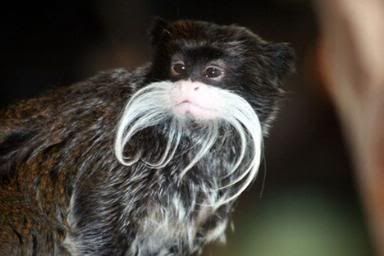
The Emperor Tamarin is a primate supposedly named for its similarity with the German emperor Wilhelm II. The name started as a joke, but stuck and became the official scientific name.
This tamarin is found in the southwest Amazon Basin, east Peru, north Bolivia and in the west Brazilian states of Acre and Amazonas. The primate inhabits tropical rain forests, living deep in the forest and in open tree-covered areas.
They're predominantly grey with yellowish speckles on their chest. The hands and feet are black and the tail is brown. The most notable feature is its long white mustache, extending to the sides beyond its shoulders. They reach to a length of 9.5 to 10.5 inches (24 to 26 centimeters), with a 14 inch (35 centimeter) long tail, and weigh approximately 11 to 14 ounces (300 to 400 grams).
Dumbo Octopus
 Blobfish
Blobfish
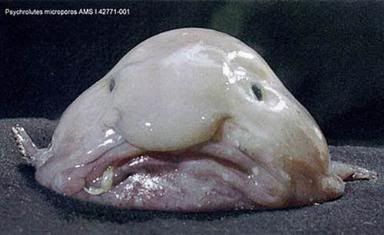
The Blobfish inhabits the deep waters off the coasts of Australia and Tasmania. Due to the inaccessibility of its habitat, it's rarely seen by humans.
Blobfish are found at depths where the pressure is several dozens of times higher than at sea level. To remain buoyant, the flesh of the Blobfish is primarily a gelatinous mass with a density slightly less than water; which allows the fish to float above the sea floor without expending energy on swimming. The relative lack of muscle is not a disadvantage as it primarily swallows edible matter that floats by in front it.
Aye-Aye
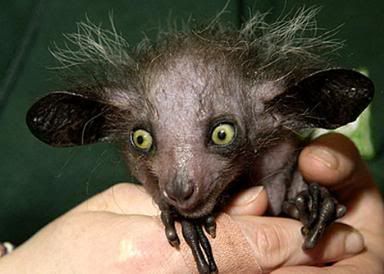
The Aye-aye is native to Madagascar, that combines rodent-like teeth with a long, thin middle finger. Being the world's largest nocturnal primate, It's characterized by its unique method of finding food, tapping on trees to find grubs, then gnawing holes in the wood and inserting its elongated middle finger to pull the grubs out.
The Aye-aye is currently an endangered species. They're the world's largest nocturnal primate, and dwell predominantly in forest canopies, weighing about 5.5 pounds (2.5 kilograms).
Axolotl

The Axolotl is the most widely known of the Mexican mole salamanders. The species originates from the lake underlying Mexico City. Axolotls are used extensively in scientific research for their ability to regenerate body parts. They're commonly kept as pets in the United States, Great Britain, Australia, and Japan.
A sexually-mature adult axolotl, at age 18 to 24 months, ranges in length from 6 to18 inches (15 to 45 centimeters) although 9 inches is most common.
Agora Rabbit
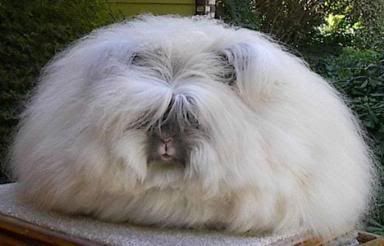
The Angora rabbit is a variety of domestic rabbit bred for its long, soft hair. They're believed to have originated in Turkey, along with the Angora cat and Angora goat. The rabbits made for popular pets with French royalty in the mid 1700s, spreading to other parts of Europe by the end of the century.
Angoras are bred mainly for their soft silky wool. Most are calm and docile but should be handled carefully. Grooming its fur is necessary to prevent the fur from matting and felting on the animal. Prone to hairballs, they require daily grooming.
Alpaca
 Platypus
Platypus
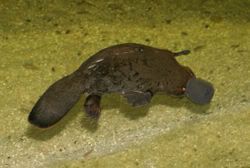
The Platypus (Ornithorhynchus anatinus) is a semi-aquatic mammal endemic to eastern Australia, including Tasmania. Together with the four species of echidna, it is one of the five extant species of monotremes, the only mammals that lay eggs instead of giving birth to live young. It is the sole living representative of its family (Ornithorhynchidae) and genus (Ornithorhynchus), though a number of related species have been found in the fossil record.
The bizarre appearance of this egg-laying, duck-billed mammal baffled naturalists when it was first discovered, with some considering it an elaborate fraud. It is one of the few venomous mammals; the male Platypus has a spur on the hind foot which delivers a poison capable of causing severe pain to humans. The unique features of the Platypus make it an important subject in the study of evolutionary biology and a recognizable and iconic symbol of Australia; it has appeared as a mascot at national events and is featured on the reverse of the Australian 20 cent coin.
Until the early 20th century it was hunted for its fur, but it is now protected throughout its range. Although captive breeding programs have had only limited success and the Platypus is vulnerable to the effects of pollution, it is not under any immediate threat.
Source